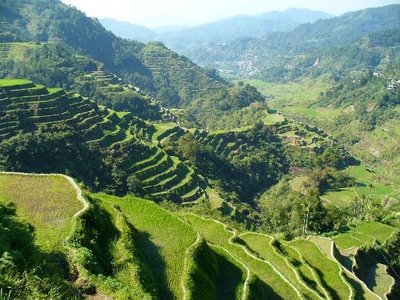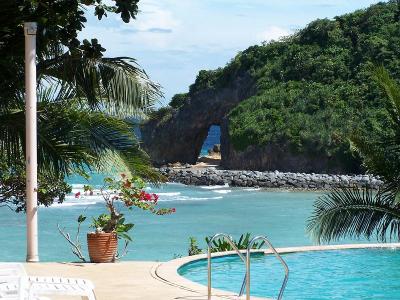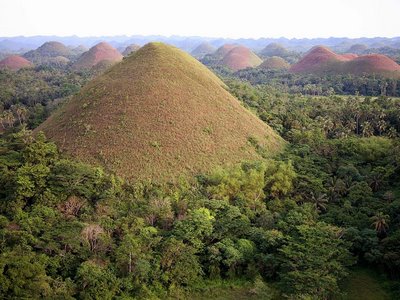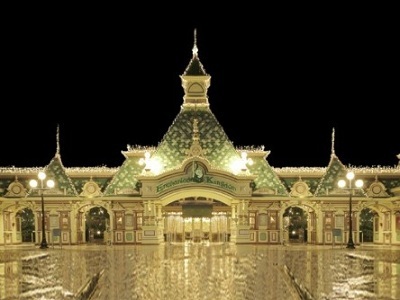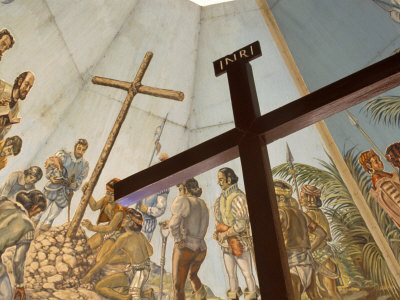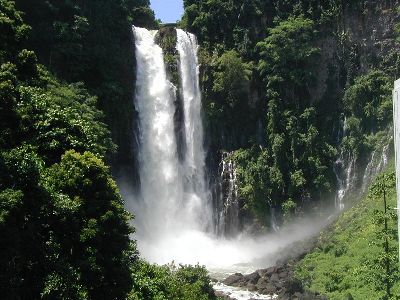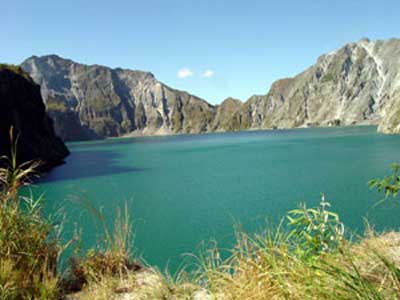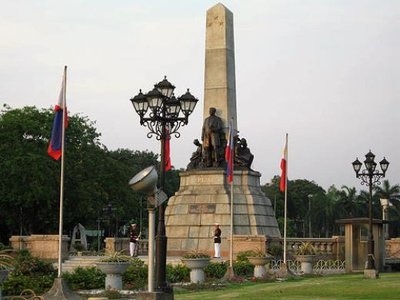Banaue Rice Terraces
Often talked about as the Eight Wonder of the World by Filipinos, the Rice Terraces was carved into the mountains of Ifugao 2000 years ago by ancestors of the indigenous. They are about 1500 metres above sea level and cover more then 10.000 square kilometres. The terraces has an irrigation system that uses water from the above rain forrest. Today the terraces is still used for rice and plantations by locals. The rice grown there is declared free from genetically modified organisms. The Banaue Rice Terraces is a popular tourist attraction. And a lot of the local business evolve around sight seeing and hospitality.
Boracay
Boracay is a Filipino island which have been awarded several awards for it's beautiful beaches. It was awarded the second best beach in the world by The Traveler's Choice 2011. Only decades ago it was a closely guarded secret. It is said to have been accidentally discovered by a movie crew during the seventies. Since then it has gradually turned into a world class tourist spot. White Beach is the main tourist beach, with the finest white sand in the world. It is stretching almost half of the western side of the island, with hotels, restaurants, lodging houses and other businesses to spark tourists' interests. On the other side of the island is the Bulabog Beach, which is directed more towards windsurfing and kiting.
Chocolate Hills
In the Bohol Province, inside an area of about 50 square kilometres, there are 1776 unusual, and almost identical, hills. They are cone shaped formations of limestone, covered only by grass. During the dry season, the grass turns brown, like chocolate. The tallest hill is 120 metres high, but most of them vary from 30 to 50 metres in height. There are several legends about how these hills were created, all involving giants. The scientiffic explanation is errosion. The hills can be viewed from two places. Either from the Chocolate Hills Complex, 55 kilometres from Tagbilaran City, or from Sagbayan Peak, about 75 kilometres from the same city.
Enchanted Kingdom
Magellan's Cross
Maria Christina Falls
The Maria Christina Falls, often callet the Twin Falls are located on the Filipino island of Mindanao, close to Iligan City. The city is also known as the City of Majestic Waterfalls, because of all the waterfalls nearby. The Maria Christina Falls, with it's 98 metres drop, is the icon of the city. Today, most of the waterflow is directed through a hydroelectric power plant. It is only possible to see the waterfall in all it's glory in Sunday mornings, when the plant closes for one hour and let the water flow free.
Mount Pinatubo
Puerto Princesa Subterranean River
In the Saint Paul Mountain Range, just a short hike from the town of Sabang, Palawan, is the entrance to Puerto Princesa Subterranean River. At 8,2 kilometres, it is one of the longest underground rivers in the world, and it can be navigated by boat. The underground river is floating through large chambers of limestone cave, which has major stalctite and stalagmite formations, straight into the South China Sea. The underground is giving life to a separate ecological system, with it's own fauna, making a brilliant sight. It is inscribed in the UNESCO World Heritage List and is one of 28 finalists for becoming the New 7 Wonders of Nature.
Rizal Park
Taal Volcano
The Taal Volcano, or Volcano Island, is located in Lake Taal on Luzon island. Lake Taal itself lies in the crater of an earlier huge eruption. which happened between 100.000 and 500.000 years ago. The volcano is active, and the entire island is considered a high-risk zone. The last eruption of the volcano was in 1977. Since then it was silent until 1991, when activity started once again. Throughout history Taal Volcano is estimated to have taken between 5.000 and 6.000 lifes. Permanent settlement on the island is prohibited, but some poor families choose to live there anyways, earning a living from fishing. Because the volcano is so close to people, it has been subject to exstensive studies. One can get a fantastic view of the lake and the volcano from the Tagaytay Ridge, making it quite an attractive sight.
